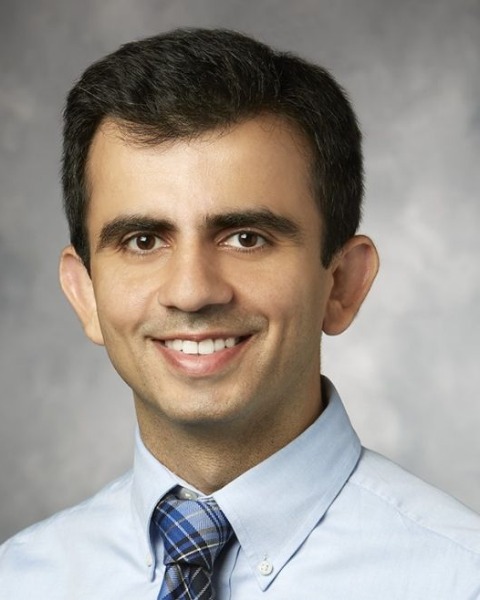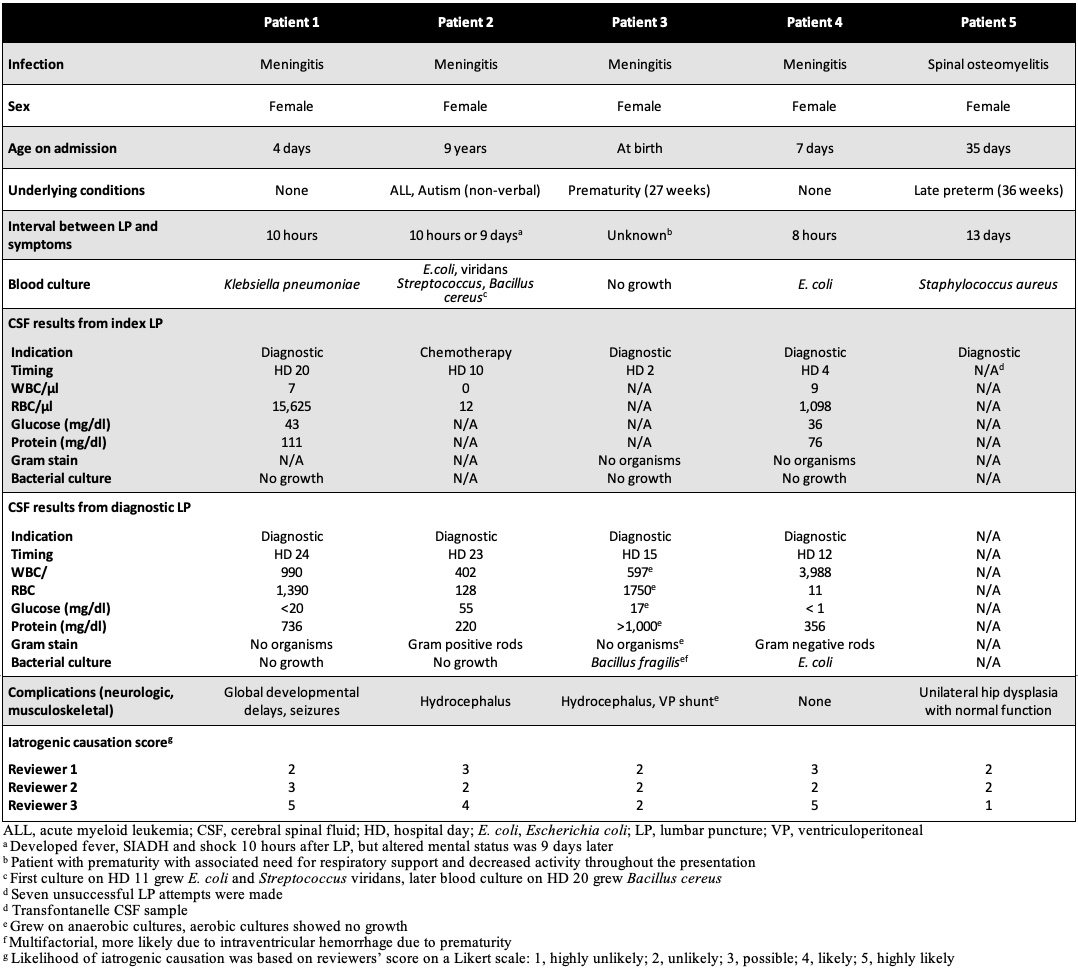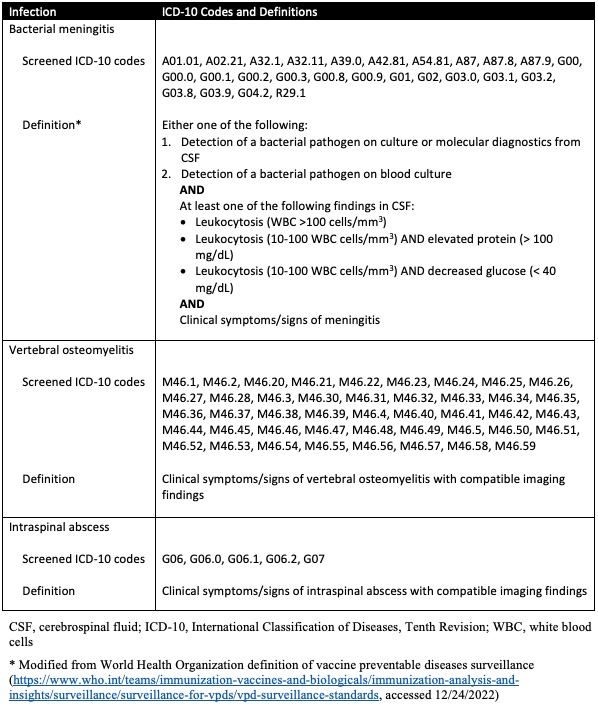Hospital Medicine: Clinical
Hospital Medicine 7
778 - Should Pediatricians Worry about Iatrogenic Infection Following Lumbar Puncture?
Publication Number: 778.416

Talal B. Seddik, MD
Clinical Associate Professor of Pediatrics (Infectious Diseases)
Stanford University School of Medicine
Walnut Creek, California, United States
Presenting Author(s)
Background: Although lumbar puncture (LP) is commonly performed in children, little is known about the clinical presentation of potential infectious complications.
Objective: We aim to describe the clinical presentation of bacterial meningitis, spinal osteomyelitis, and intraspinal abscess following LP in children.
Design/Methods:
Using ICD-10 codes and definitions listed in Table 1, we retrospectively identified children ≤ 18 years at a tertiary children’s hospital, who had bacterial meningitis, spinal osteomyelitis, or intraspinal abscess, and whose symptoms started within 6 weeks of an index LP between 01/2019 and 12/2021. Then, 3 pediatric infectious diseases physicians scored these cases for likelihood of iatrogenic causation due to the index LP on a 5-level Likert scale from least likely (1) to most likely (5).
Results: Twenty-five children with bacterial meningitis and 6 children with spinal osteomyelitis were identified, of whom 4 bacterial meningitis cases and 1 spinal osteomyelitis case had a preceding index LP (Table 2). Four of these 5 cases were transferred from other hospitals. The reviewers scored 3 of the 5 cases an average of ≥ 3 on the Likert scale for likelihood of iatrogenic causation. All 3 cases (patients 1, 2 and 4 in Table 2) had bacterial meningitis, with symptom onset 8-10 hours after the index LP and a subsequent LP showing clear pleocytosis and glycorrhachia not detected on the index LP. Despite early symptom onset after the index LP, there was a delay in diagnosis; a subsequent LP was not done until 4, 13, and 8 days after the index LP, and antibiotics were discontinued for 5 days in one patient (patient 4) who had bacterial meningitis. Further, the earliest subsequent LP was obtained 4 days from the index LP due to clinical suspicion for iatrogenic meningitis in patient 1.
Conclusion(s): It is challenging to prove that LP causes iatrogenic infection except by randomizing LP, which is not possible or ethical given its importance to rule out meningitis or administer chemotherapy. However, some of our cases had an initial reassuring CSF analysis from an index LP, followed shortly by a clinical change and eventual microbiologic diagnosis of bacterial meningitis, and we believe these cases raise a concern for iatrogenic infection. Regardless, it is important for pediatricians to recognize that some children will have bacterial meningitis despite reassuring CSF results from a recent LP, with an interval between LP and symptom onset as short as 8-10 hours. This could prevent delayed diagnosis as seen in some of our patients whose initial CSF analysis was falsely reassuring. 

